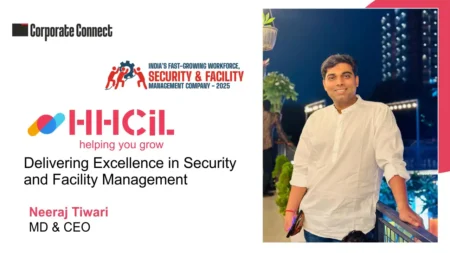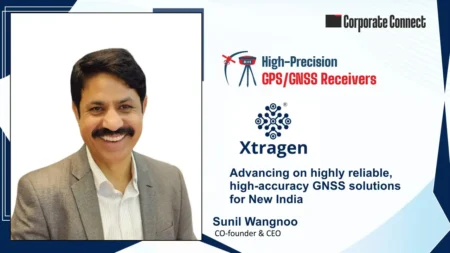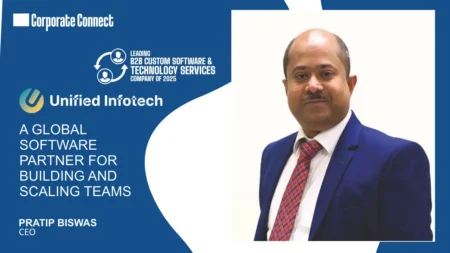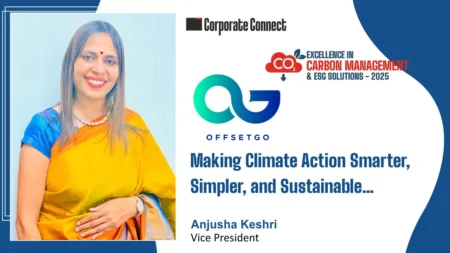Pioneering Innovative Wastewater Treatment Solutions to Secure Water for the Future
As water scarcity intensifies and environmental regulations tighten, wastewater treatment is no longer a peripheral function—it’s central to sustainability and operational efficiency. Indra, a technology-first company, is at the forefront of transforming wastewater from a liability into a recoverable asset. With a focus on decentralised, electrically powered systems, Indra is changing how industries manage water.
The Genesis of Indra
Founded in 2018 by Amrit Om Nayak and Krunal Patel, Indra emerged from a deep desire to address real-world water challenges with engineering precision. Krunal’s early exposure to factories showed him the careless discharge of wastewater. Amrit, growing up amid water scarcity, saw the consequences of poor water management. Their backgrounds in automotive, clean energy, and systems engineering enabled them to challenge traditional models. They saw that legacy systems were bloated, chemical-heavy, and slow to adapt. Indra was conceptualised to deliver modular, scalable, plug-and-play treatment systems built for the realities of the 21st century.
Navigating the Obstacles Along the Way
One of the core challenges was shifting the mindset around wastewater. For most industries, wastewater treatment was a compliance checkbox. Indra took a different route—by deploying pilot systems directly into harsh industrial conditions. These pilots became live proof points. They didn’t just work; they delivered visible, measurable improvements. Clients began to understand that wastewater treatment could be a strategic asset, not just an environmental obligation. By tying performance to ROI, Indra gradually moved the conversation from cost centres to value creation.
Purposeful Mission, Vision, and Values
Indra’s mission is direct and bold: secure a water-positive future by making treatment accessible, efficient, and future-ready. The vision is global in ambition—to lead the shift from centralised to decentralised water management systems. Indra encourages industries to see water not as an overhead but as a core asset. Its values are clear and embedded into every project: Innovation that works in the real world. Transparency that builds trust. With sustainability at the core and a deeply customer-focused approach, Indra’s team strives hard to ensure that every solution adds business value. Agility, resilience, and collaboration form the backbone of its culture.
An Edge Over the Peers
Indra has re-engineered the conventional playbook. While the industry is dominated by EPC-driven, large-footprint, chemical-intensive systems, Indra operates differently. Its product-based approach replaces complexity with modularity. ElectroX—the flagship solution—delivers powerful electrochemical treatment without chemical dependency for treating water. What makes ElectroX stand out is its noncontact micro-electrolysis, which generates hydroxyl radicals and metal hydroxides in-situ, breaking down pollutants and binding them into removable forms.
This means reduced chemical input, lower sludge generation, and consistent and superior treatment outcomes. The compact footprint allows deployment even in spaceconstrained sites, and plug-and-play installation slashes project timelines. Indra’s systems are smart by default. Integrated automation and remote analytics (via SPECTRUM) deliver realtime monitoring, efficiency tracking, and predictive maintenance. It’s not just treatment. It’s intelligent treatment that scales.
Distinctive Marketing Strategies
Indra’s go-to-market strategy is rooted in partnerships and proof. The company collaborates with EPC firms, O&M players, and industry influencers to scale access. Pilots remain a core tool—Indra believes in showing, not just telling. A working system on-ground converts faster than any pitch deck. It also invests heavily in building customer satisfaction to strengthen relationships. Customer support, real-time technical feedback, and training ensure long-term value delivery. The brand-building focus is not on volume but impact: measured in water saved, sludge avoided, and customer wins.
Transforming Wastewater Treatment into a Business Advantage
Historically, wastewater was seen as a regulatory burden. Treatment meant chemicals, large areas, and high maintenance. Indra flips this equation. By using electricity instead of chemicals and deploying systems onsite, it reduces logistics, O&M cost, and time-to-impact.
ElectroX enables industries to treat difficult
effluents—high COD, dyes, heavy metals—slashing the consumption of chemicals by over 95% and eliminating the need for bulky settling systems. The treated water can be used for reuse applications, enabling significant reduction in freshwater intake. This means water savings, regulatory compliance, and brand value—a triple win. With smart controls and data feedback, Indra’s systems also empower sustainability teams to demonstrate environmental performance in real time, backed by hard data. It’s wastewater treatment with business intelligence embedded.
The Latest Technologies in the Industry
The wastewater sector is moving from mechanical and chemical to electrical and digital. Advanced oxidation, nutrient recovery, and energy-positive systems are gaining traction. Electrochemical methods like Indra’s are gaining preference for their ability to tackle complex pollutants without chemical stockpiling. The integration of IoT, AI, and edge computing is helping industries monitor plant performance remotely, adjust parameters dynamically, and schedule predictive maintenance. Indra’s platform is built with this future in mind. Its systems are designed to plug into a broader digital water management ecosystem.
The next wave of technology is not just about
removal efficiency but recovery—recovering clean water, energy, and valuable elements like phosphorus. Indra is already exploring integrations that make this shift viable.
Nurturing a Supportive and Mission-driven Environment
At Indra, innovation doesn’t come from R&D labs alone—it comes from the field. The company fosters a culture of hands-on problem solving. Engineers aren’t desk-bound; they’re on-site, listening to operators, iterating solutions. Every team member, regardless of title, is encouraged to challenge assumptions. Cross-functional brainstorming is common. Failures are seen as learning curves. This culture has built resilience and adaptability, critical in an industry where no two effluent streams are alike.
Notable Achievements and Milestones
From two founders to a 65+ strong team, Indra’s journey is built on innovation and perseverance. ElectroX is now operating in mission-critical facilities at Tata Steel, Aditya Birla, Unilever, Orient Fashions, IHCL’s Taj Mahal Palace, and more. Recognition has followed impact. Indra has won accolades from the World Economic Forum (Urban Freshwater Challenge), Imagine H2O, and Cleantech Group (AsiaPacific Company of the Year). It was shortlisted by Global Water Intelligence in the breakthrough technology of the year category. Forbes listed Indra and its team as its newest Climate Warriors. These aren’t just awards—they validate a belief: that Indian innovation can solve global water challenges.
What Lies Ahead for Indra?
The focus now is twofold: global scale and deeper integration. Southeast Asia and Middle-east are key expansion targets due to industrial wastewater stress water scarcity respectively. Indra is building partnerships in Malaysia, Indonesia, and Vietnam to Fasttrack pilots and build local capacity. On the technology side, efforts are on to make the systems even more robust, adaptable across effluent profiles, and interoperable with existing infrastructure. Indra is pushing the boundaries with new work in material science, quality sensing, power electronics and system management software and firmware.
The goal is to become the default choice for decentralised industrial wastewater treatment worldwide and drive greater treatment efficiencies and lower cost with better feedback loops and predictive maintenance.
Leadership Mantra
Advising aspiring entrepreneurs, Mr Krunal shares, “The key is to remain resilient and committed to addressing real-world challenges. This industry is slow to adopt change, so patience and persistence are crucial. Focus on creating genuine, tangible value, backed by data. Build scalable and costeffective technology that truly solves customer pain points.”
Must Read:










